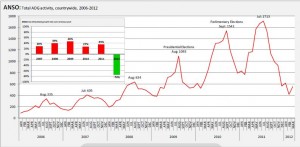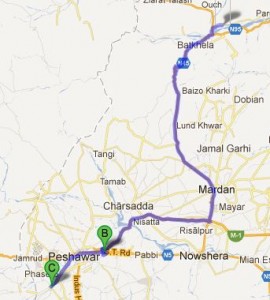A Tale of Two Senators: Feinstein Calls for Apology to Pakistan, Paul Attempts to Defund
You know that things are truly screwed up regarding US policy on Pakistan when the “best of Senators” is Dianne Feinstein, but it’s hardly surprising that Rand Paul would step up in the Senate to carry Dana Rohrabacher’s sentiments forward and attempt to cut all funding from Pakistan until Dr. Shakeel Afridi is released.
First, the good news from Feinstein. While many in Washington were getting overheated in response to a cost estimate finally being attached to the closure of NATO supply routes through Pakistan ($100 million a month), Dianne Feinstein made the courageous observation that the US could likely move ahead through the current diplomatic standoff with Pakistan by issuing a simple apology over the Salala raid:
A senior US lawmaker said on Wednesday that apologising to Pakistan over the Salala incident would improve Washington’s relations with a key ally.
“National security of the US will be better served with a positive relationship with Pakistan,” Senator Dianne Feinstein told a Senate hearing on budget priorities for 2013.
The Senator, who chairs the Senate Intelligence Committee, observed that both sides made mistakes in handling the Nov 26 incident, which caused the death of 24 Pakistani soldiers in a US air raid.
/snip/
Senator Feinstein noted that the dispute over the supply lines could be solved “with some civilian acceptance of the mistakes” the US had made.
Such an acceptance could also lead to the reopening of Nato supply lines, she said, adding that “it would do well to apologise” for the mistakes made.
Pakistan’s ambassador to the US was very quick to respond to this overture:
“We appreciate Senator Feinstein for showing the way forward in normalising ties in a relationship that is important to both sides and critical for stabilising the region,” said Pakistan’s Ambassador Sherry Rehman while welcoming the gesture.
Rehman’s time in Washington this week has been difficult, as seen by Rand Paul’s attempt at “diplomacy”:
US Senator Paul Rand was blocked from attaching an amendment to the farm bill that would withhold US aid to Pakistan.
The amendment would have defunded US aid to Pakistan until the country frees an imprisoned doctor, who worked for CIA in hunt for al Qaeda chief Osama bin Laden.
Rehman was happy for the move to block Paul’s action, but it appears that her task is doomed: Read more →


